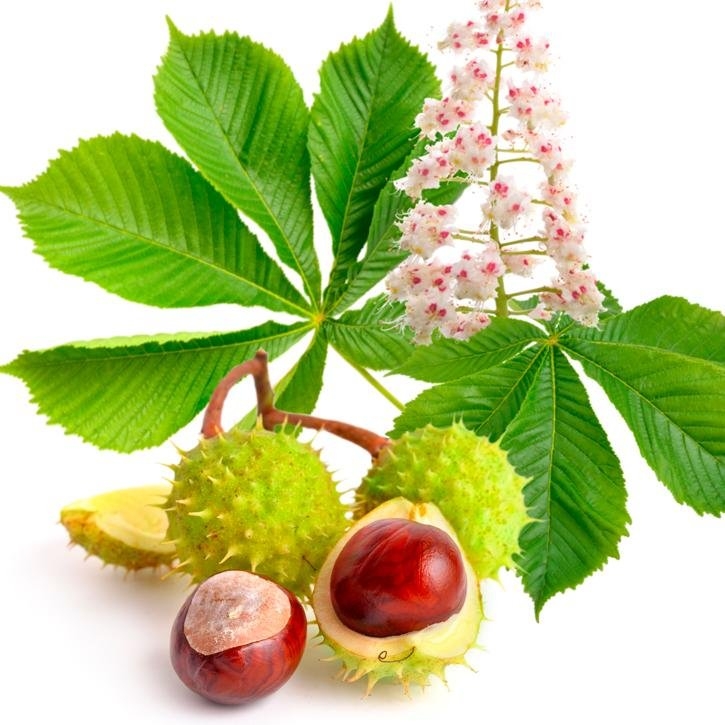Description
This tree of 20-30 cm has opposite leaves, with thick trunk of greyish bark, smooth in young specimens and cracked and scaly in the adult ones, with the oval and thick top. Long and petiolate leaves, palmate compound with 5 to 9 folioles of different size, dark green colored in the sheaf and paler in the underside, sharp and unequally toothed. Petioles and peduncles with ferruginous tomentum. Numerous flowers in eye-catching elongated inflorescences, conical and irregular, in erect terminal bunches, hermaphroditic (those placed in the base of the inflorescence) or only male (the others) with 4-5 different petals, with a pink or yellowish patch in the base. Stamen made up of 5-9 stamens and three gynoecium carpels, bristling with conical and a little bit sharp thorns. The capsule opens from three apical valves and contains 1-3 globose seeds, with shiny chestnut colored head and whitish and oval thread. It belongs to the family of Hippocastanaceae.
It is a tree coming from Asia Minor or Central Asia, it grows in mountainous and damp zones in the North of Greece, Albania and Bulgaria, it is cultivated also as ornamental plant. It blooms in springtime (from April) and maturing seeds are harvested in October (in autumn) during the fall of fruits and the branch bark is used in March (in springtime).
Chestnuts which we normally eat come from the common chestnut tree (Castanea sativa) and are totally different from those of the Aesculus hippocastanum, being these fruits not suitable for the human intake.
Part used
Preferably its seeds. Also, the bark and occasionally the leaves can be used.
Indications
*Seeds
- Varicose veins and other chronic venous insufficiency in the extremities: heaviness, swelling, pain, tingling sensation, night cramps in the calves.
- Hemorrhoids.
- Edema reabsorption, especially those post-surgery.
- Prevention of thrombophlebitis and varicose ulcers.
- Skin capillary fragility: couperose, petechiae, ecchymosis, hematomas, erythrosis etc.
- Others: Seeds have been used in folk medicine to treat diarrhea, fever and arthritis.
- Skin conditions: dermatitis.
- Sunscreens.
*Leaves and bark
- In case of fragility and congestive conditions of the venous and lymphatic: varicose veins, hemorrhoids, varicose ulcers, prevention of phlebitis and thrombosis, edemas, epistasis, ecchymosis, metrorrhagias, etc.
- Traditionally they have been used for the treatment of diarrhea, fever. Arthritis, edema, benign prostatic hyperplasia, premenstrual syndrome and unproductive cough.
Bibliography
Herbal Drugs and Phytopharmaceuticals. Norman Grainger Bisset (Ed). Max Wichtl. CRC Press.1994.
Plantas Medicinales y Drogas Vegetales para infusión y tisana.Edición española a cargo de: Salvador Cañigueral, Roser Vila, Max Wichtl.1998.
Plantas Medicinales. Thérapeutique-Toxicité.Christiane Vigneau. Masson, Paris 1985.
Plantas Medicinales. Margarita Fernandez y Ana Nieto.Ed Universidad de Navarra. EUNSA 1982.
Fitoterapia: Vademecum de Prescripción. Plantas Medicinales. Colaboran: Asociación española de médicos naturistas. Colegio Oficial de Farmacéuticos de Vizcaya.
Matière Médicale (tomo II). RR Paris- H. Moyse.Masson 1981.
Plantas Medicinales. El Dioscórides Renovado.Pio Font Quer.
Pharmacognosy 9th edition.Varro E. Tyler – Lynn R. Brady – James E. Robbers.
100 Plantes Medicinales. Max Rombi.Romart 1998.
The Complete German Commission E Monographs. Therapeutic Guide To Herbal Medicines. Mark Blumenthal. American Botanical Council 1998.
Fitoterapia Aplicada.J.B. Peris, G. Stübing, B.Vanaclocha.Colegio Oficial de Farmacéuticos de Valencia 1995.
Botanical Influrences on Illness.Melvyn . Werbach, M.D.Michael T. Murray, N.D.
Pharmacognosy, Phytochemistry, Medicinal Plants. Jean Bruneton. Lavoisier Publishing.
Jean Bruneton. Farmacognosia. Fitoquímica Plantas Medicinales. 2ª Edición. 2001. Ed Acribia. S.A.
Bombardelli e, Morazzoi P, Griffini A. Review : Aesculus hippocastnum L. Fitoterapia 67 :483-511, 1996.
